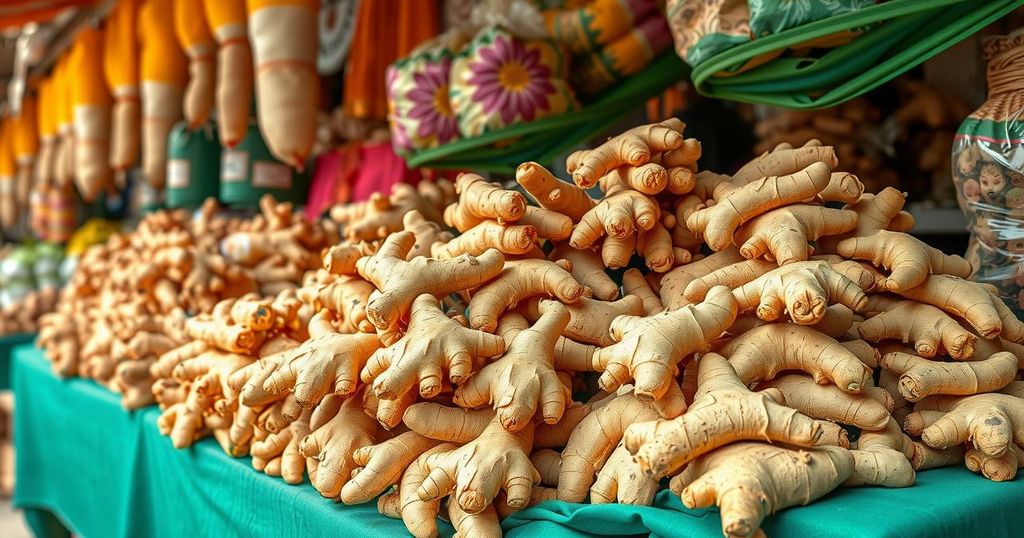Peru’s Ginger Industry: Expansion, Challenges, and Market Dynamics
Peruvian ginger is encountering phytosanitary challenges and stiff competition from Brazil, which may impact its international market performance. A significant increase in planting area is expected to provide greater supply, potentially lowering prices. Meanwhile, efforts are underway to strengthen sanitary measures and maintain demand amidst stringent European standards.
Peru’s ginger industry is currently grappling with phytosanitary issues that could undermine its international competitiveness. The expansion of ginger cultivation and increasing pressure from Brazilian competitors are creating mixed prospects. The stability of the market is contingent on Peruvian producers’ ability to navigate these challenges effectively.
The 2024 season faced challenges characterized by a shortage of raw materials and elevated prices. However, this situation is anticipated to shift significantly with a projected increase of 40 to 50% in the ginger planting area. According to Grober Galindo, a representative from La Campiña, previous high prices spurred many producers to expand their cultivation without accounting for the preceding shortage.
This increase in planted areas is indicative of a higher market availability of ginger, which is likely to exert downward pressure on prices. Currently, a 30-pound box of ginger is priced at $38 in the US, which is atypical for this period. With enhanced supply and an influx of Brazilian ginger, a price decline is expected. Grober noted that market participants in Europe and the United States are already adjusting their purchasing strategies based on anticipated production volumes in Peru.
Among the key challenges facing the Peruvian ginger sector is the Ralstonia bacterium, which poses significant concerns for exports, particularly to Europe. Grober stated that if detected early in a shipment, the product must be incinerated, leading to substantial losses for exporters. In response to this threat, Peruvian companies are bolstering sanitary controls and collaborating with organizations like Senasa and INIA to prevent outbreaks. Additionally, sectors are uniting to enhance agricultural practices and meet international quality standards.
Despite existing hurdles, demand for Peruvian ginger continues to be robust. Grober noted, “We are exploring new opportunities in the United States and expanding our product range, including fresh ginger, IQF, and ginger juice.” Nevertheless, he acknowledged that exports to Europe face ongoing challenges due to strict phytosanitary regulations.
In conclusion, while Peru’s ginger industry faces several adversities, including phytosanitary concerns and competition from Brazil, the anticipated increase in planting areas could lead to greater market supply and reduced prices. Producers are actively working to enhance quality standards and curb the challenges posed by the Ralstonia bacterium. Despite these drawbacks, a sustained demand for Peruvian ginger remains evident, signaling potential growth opportunities in various markets.
Original Source: www.freshplaza.com




Post Comment